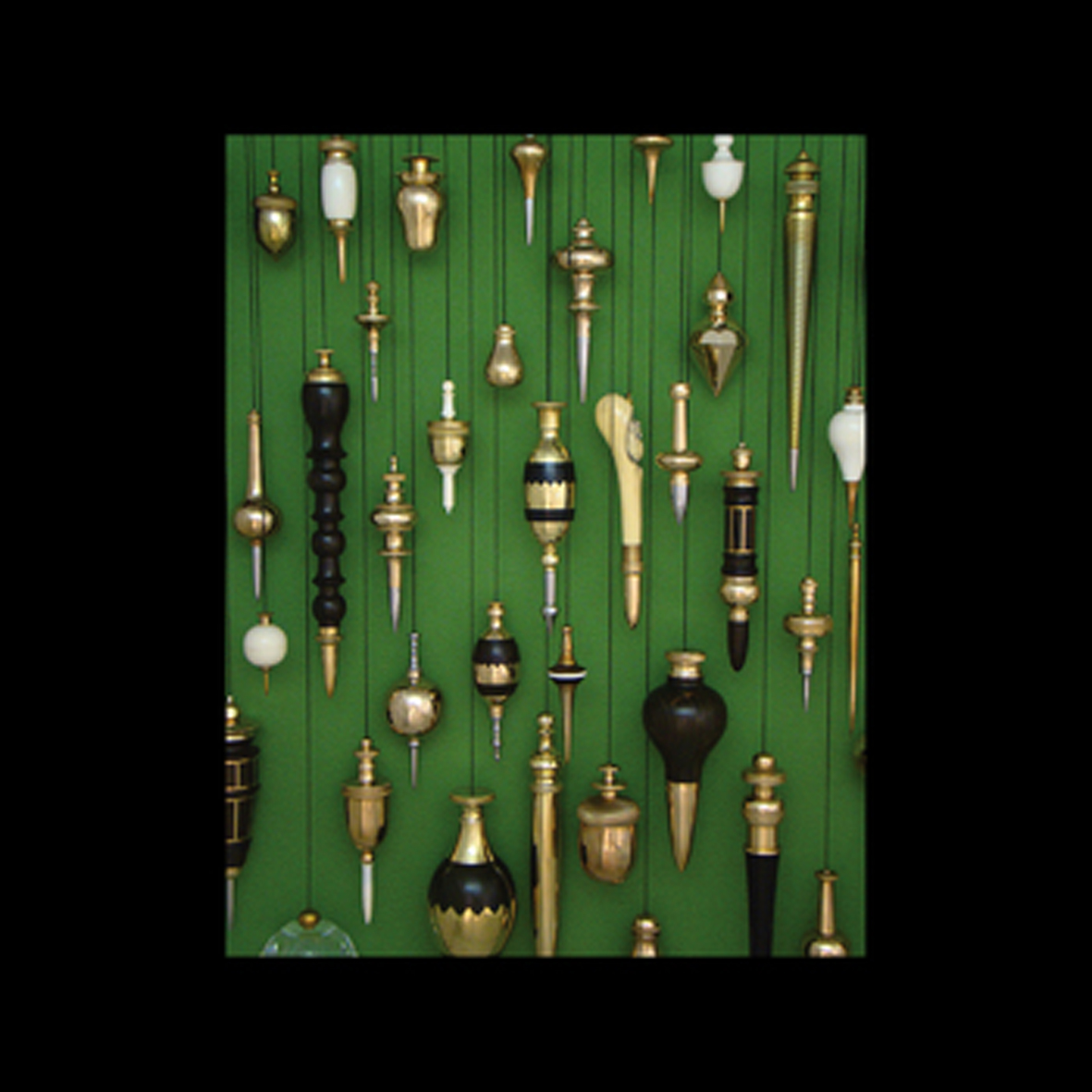Oto Hiax
 After first quietly surfacing with a self-released EP back in 2015, this duo of Seefeel's Mark Clifford and Loops Haunt's Scott Gordon make their formal debut with a full-length on Editions Mego.  While hints of both artists' main gigs are evident, this drone-centric and abstract project is very much its own thing.  For the most part, this album is a likeable suite of incidental vignettes built from warm, sustained synth tones, but a handful of pieces transcend that modest aesthetic and delve into admirably novel territory.  If I were being glib, I would describe the highlights as "hauntological drone," but that has misleading dark ambient connotations and does not do Oto Hiax any justice at all.  Instead, I will just say that Clifford and Gordon have found an evocative and subtly haunting way of blurring together dream-like and gently hallucinatory soundscapes with the sharp edges of reality.
After first quietly surfacing with a self-released EP back in 2015, this duo of Seefeel's Mark Clifford and Loops Haunt's Scott Gordon make their formal debut with a full-length on Editions Mego.  While hints of both artists' main gigs are evident, this drone-centric and abstract project is very much its own thing.  For the most part, this album is a likeable suite of incidental vignettes built from warm, sustained synth tones, but a handful of pieces transcend that modest aesthetic and delve into admirably novel territory.  If I were being glib, I would describe the highlights as "hauntological drone," but that has misleading dark ambient connotations and does not do Oto Hiax any justice at all.  Instead, I will just say that Clifford and Gordon have found an evocative and subtly haunting way of blurring together dream-like and gently hallucinatory soundscapes with the sharp edges of reality.
The opening "Insh" does not exactly put Oto Hiax's best foot forward, but it does provide a vague hint of the duo's vision.  Lasting little over two minutes, the piece is a simple and languorous reverie of pleasantly twinkling synthesizers over a muted bed of gentle rumbles and tape hiss. The bulk of duo's energies were clearly not spent obsessing about crafting a cool melody or massing layers into any kind of rewarding harmonic depth, but there is a lot happening dynamically (albeit on a very small scale): the simple central motif hides a lot of wobbling, whooshing, and glimmering micro-activity.  If given more time to develop, "Insh" probably could have evolved into an absorbing cloud of hazy overtones, but Clifford and Gordon are instead content to just let their motif fade away so they can move onto the next idea.  Fortunately, the next idea is quite a bit more compelling, so I can understand their hurry.  Built upon a stuttering and slightly erratic machine-like pulse, "Flist" is a strangely beautiful and unpredictable piece, lazily ebbing and flowing from one swell of dense, gnarled-sounding synth snatches to another as a host of chaotic electronic flourishes blurts, chirps, and squelches away in the periphery. As much I like the hypnotic throb and the futuristic tone, the real magic lies in the inventive structure: "Flist" feels like the compositional equivalent of a flock of birds endlessly dispersing and recombining into interesting new shapes.
The rest of the album is basically a see-sawing back and forth between those two disparate poles: pastoral ambience and considerably more inventive and distinctive fare. Near the end of the album, a third option emerges as well: obsessively stuttering locked-groove-style rhythm experiments.  To some degree, that bizarre mixture of aesthetics seems to be by design, as if Clifford and Gordon deliberately sequenced a flow of sketches and interludes between their more painstakingly crafted and elaborate set pieces to ensure that their best ideas make maximum impact.  One such high point comes immediately on the heels of "Flist," as the brief but wonderful "Dhull" sounds like a buzzing drone performance taking place as a construction site slowly, fitfully, and reverberantly collapses in the distance.  Aside from a few strong compositions, it is primarily the clattering, crackling, and scraping non-musical textures such as those that make this album special–the more they intrude upon the simple, sketchlike synth motifs, the more compelling the material gets.  Of course, the best moments of all come when a strong composition intersects with a strong textural component, as occurs with the album's sublime centerpiece "Thruft."  Musically, the piece is just a elegantly simple and bittersweetly melancholy chord progression, but it increasingly sounds like it is unfolding in the empty hull of a sinking ship being slowly bent and warped by the steadily increasing pressure.  As such, it is quite a brilliantly executed and absolutely haunting bit of music.
To some degree, the swaying and radiant closer "Loyal Odes" acts as an unofficial sequel to the imaginary and morbid tableaux that I projected onto "Thruft."  This time, however, the ship is resting on the bottom of the sea and the souls of everyone on board are slowly fluttering up to a sun-dappled heaven.  More prosaically, "Odes" is essentially a minimal and elegiac organ-like drone piece, but it is elevated into something far more with a host of hollow thumps, metallic creaks, and a gorgeously shifting nimbus of feedback moans.  Clifford and Gordon certainly know how to end an album on a perfect note, even if some of the preceding material is a bit uneven.  While a number of pieces feel like mildly interesting experiments, prematurely abandoned ideas for more significant works, or mere ambient water-treading, the album unexpectedly works quite well as a complete experience.  This is largely due to the duo's talent for coherent and effective sequencing and their impressive intuition for pacing: a few songs may end a bit too quickly for my taste, but nothing is ever allowed to overstay its welcome and these pieces all flow together quite nicely.  In a perfect world, the album would probably have a more favorable "killer" to "filler" ratio, but Oto Hiax's intermittent flashes of brilliance are easily dazzling and inventive enough to eclipse their less-inspired moments.
 



